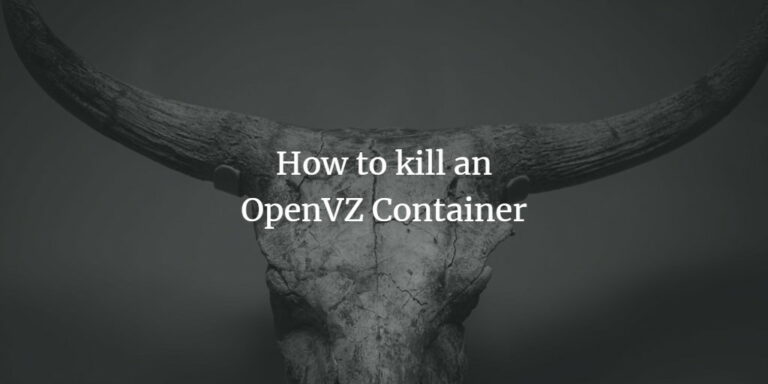
View Image OpenVZ density on a 768 Mb (¾ Gb) RAM box A single virtual environment can be expanded to the entire physical server, for example, using all CPUs and all memory. It supports up to 64 CPUs and 64G memory. Since OpenVZ uses a separate core model, it has the same scalability as the 2.6 Linux core. Templates and vzpkg Features of OpenVZ Scalability Vzctl set VEID -kmemsize barrier:limit -save. To set VE kernel memory barrier and limit, use Vzctl set VEID -diskspace soft:hard -save. This is useful if, say, sshd is dead for this VE and you want to troubleshoot the case. Say, to see a list of processes inside VE 102, use A VE can also be stopped (or rebooted) by its owner using standardĮxecute a command inside a gived VE. Start means creating a Virtual Environment context within the kernel, setting all the resource management parameters and running VE's config parameters are optional, defaults for them are given in a global configuration file. This command will create a new Virtual Environment with numeric ID of VEID, which will be based on a specified OS template (a Linux distro) and having resource management parameters taken from a specified config sample. This is a simple advanced command line tool for managing a virtual environment.
#Openvz beancounter scripts software#
OpenVZ provides command line tools to manage virtual environment (vzctl) and software in virtual environment (vzpkg). Since the state is usually fully protected, this pause looks like a normal calculation delay. The delay time of the whole process is only a few seconds. This process is called dynamic migration: a virtual environment is frozen, and then all its state is stored in a file on the disk this file is transferred to another machine, and then the virtual environment is unfrozen (recovered) there. This eliminates the need to shut down during the migration of a virtual environment from one physical server to another. In mid-April 2006, OpenVZ released dynamic migration and checkpointing functions. At the second level, the standard Linux scheduler uses standard Linux process priorities and related mechanisms to determine which process in the virtual environment gets the CPU. The scheduler in OpenVZ is an implementation of a two-level fair sharing scheduling strategy.Īt the first level, the scheduler determines which virtual environment is allocated CPU time slices according to the value of cpuunits of each virtual environment. In a virtual environment, standard tools can be used to set disk quotas for UNIX users and user groups. Two-level disk quotaĮach virtual environment has its own disk quota, which is calculated by the number of disk blocks and inode (approximately equivalent to the number of documents).

These resources can be adjusted during the operation of the virtual environment and do not need to be restarted. OpenVZ's resource management includes three parts: two-level disk quota, fair CPU scheduler, and user beancounters. If necessary, any virtual environment can be granted access to real devices, such as


 0 kommentar(er)
0 kommentar(er)
